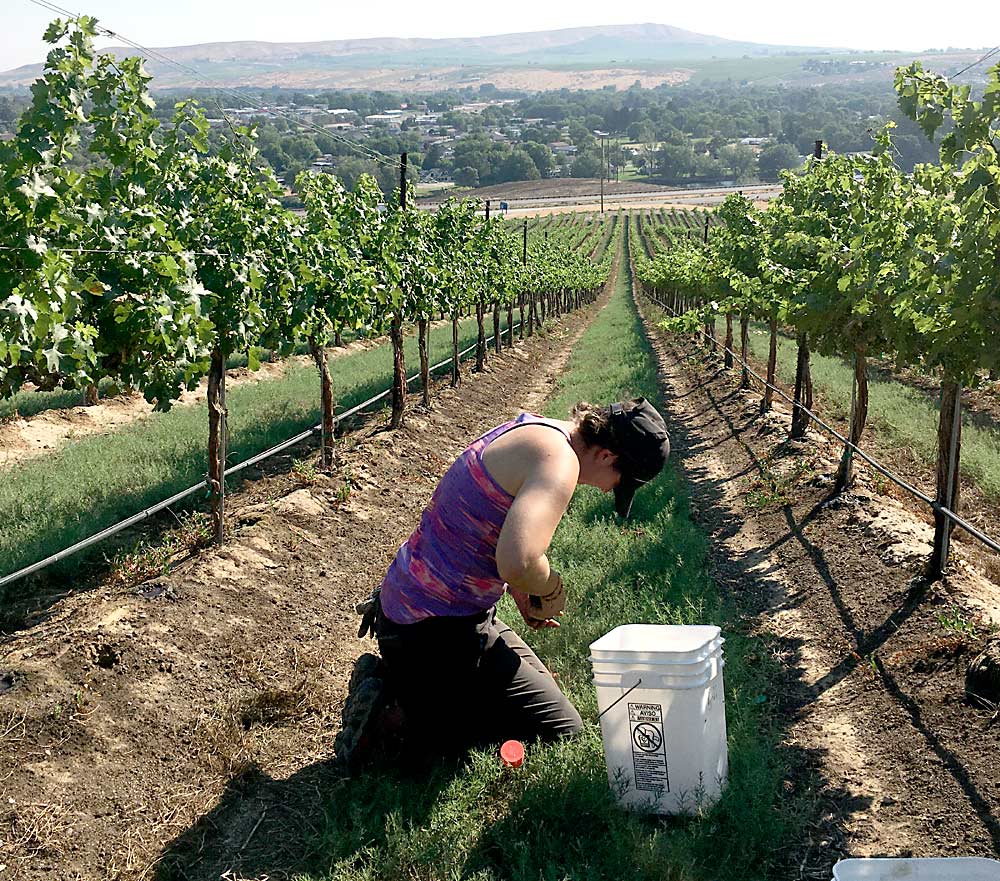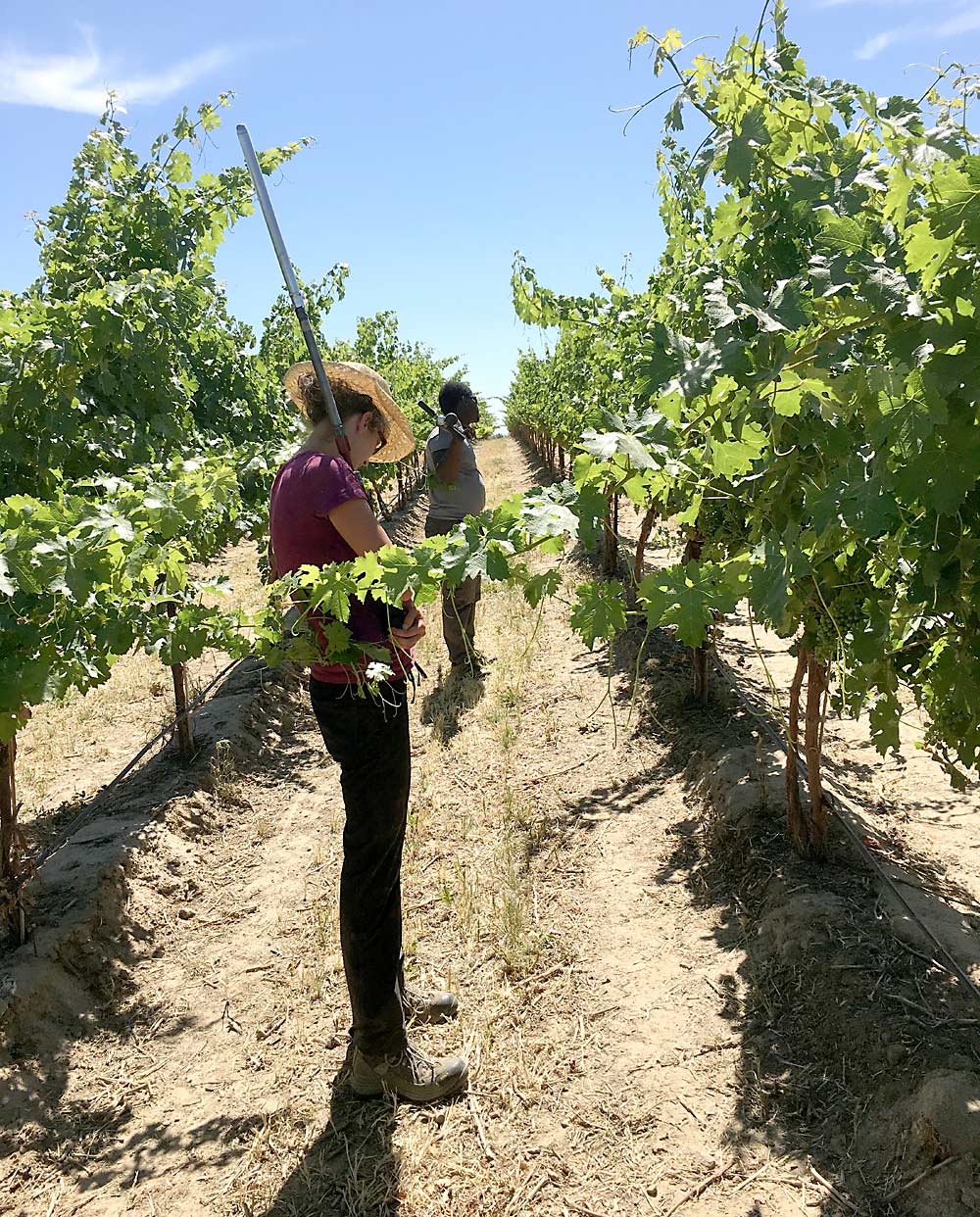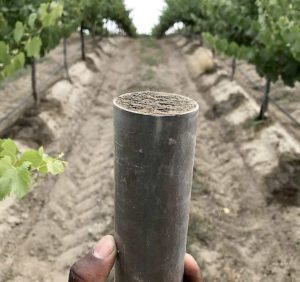
Attention on soil health has been growing as a way for farmers to deepen their understanding of the soils they manage and to assess the value provided by these farmers and soils. Essentially, soil health is the ability of soil to provide the necessary functions to serve its intended purpose. And across the country, extensive work has been done to clarify which soil health measurements, or indicators, are best to measure for a given system and identify which measured values signify “good” soil health. We can think of these as soil “vital signs.” But stepping back to Soil Science 101, we find that soil diversity makes it challenging to define good soil health the same way across the country.
Soil formation is based on five main factors: climate, living organisms, relief (slope), parent material (rock or consolidated sediment that forms the soil) and time. As you can imagine, some of these factors, like relief, can change drastically, even across a field. But climate, parent material and time are wildly different across the country. For example, the climate differences between Central Washington and Iowa have influenced the different types of vegetation in each region. In Iowa, the deep-rooted tall grasses were able to thrive due to the cooler and more humid conditions, while Central Washington’s hotter and drier climate favored the growth of shrubs and bunch grasses. The dominance of these different types of vegetation over long periods of time has had a significant impact on the soil we see in each region today.
Looking at far lower levels of organic matter and wet stable aggregates, one might determine that Washington shrubland soil isn’t as healthy as the Iowa prairie. But the Washington soil supports its native species just as well as the Iowa soil supports the prairie and surrounding environment. Arguably, many soils under cultivation that were once native prairie in the Midwest may now be less healthy, having, over time, lost soil organic matter, one of the most important soil health indicators. In Central Washington, on the other hand, areas under cultivation, especially those under irrigation, in some cases now have more soil organic matter than the native soils once there. On top of that, the inherent soil texture — the proportion of sand, silt and clay particles that make up soil — largely determine soil test results.
Long story short: Not all farmers can compare their soil test results to each other, especially across soil types, climatic zones or cropping systems. Ultimately, soil health is contextually and regionally specific.

Washington soil health assessment
To provide Washington state growers with regionally relevant soil health test interpretation, soil scientists at Washington State University partnered with researchers at the Washington State Department of Agriculture to determine expected soil health indicator values across Washington’s soils and assess the response of these indicators to soil management practices in nine specialty cropping systems.
This project is now part of a larger effort to document the “State of the Soils,” which is one of the primary goals of the Washington Soil Health Initiative. Currently, over 700 soil samples have been taken in nearly 50 different cropping systems.
In a soil health assessment, it’s important to think about the goals of a system, and wine grapes are a crop where the goals and management differ from many other systems. Vines are often intentionally stressed by limiting soil moisture and nutrient levels to increase grape quality, a contrast to other systems where high yields may be the goal.
Looking specifically at wine grapes, we took soil samples directly under the vine from 70 vineyard blocks in June and July of 2020 and 2021. We found that, in general, the soil health indicator values measured in the vineyards were lower than those measured in large-scale soil health assessments in the Midwest and Southeastern U.S., as we expected with the differences in climate and soil type.

A few of the key indicators that we measured include:
Physical
—Soil texture: the relative proportion of sand, silt and clay-sized particles in the soil. Texture affects each of the following indicators, so knowing your textural class provides important context for interpreting the following measurements.
—Available water-holding capacity: the soil’s ability to retain water and provide it for plant use. Building soil organic matter with amendments will increase the capacity of the soil to store plant available water, so vineyard managers may be able to reduce the amount of water they apply and increase the time between irrigation events while still controlling vigor.
—Aggregate stability: the resistance of aggregates — groups of soil particles bound together — to dispersion. Preserving aggregate stability improves water infiltration, reduces water runoff down slopes and limits soil erosion.
Biological
—Soil organic matter: living and dead components of carbon-containing compounds in various stages of decomposition. The organic matter serves necessary soil functions as a reservoir for nutrients, promoting soil aggregation, increasing nutrient cycling, retaining moisture, reducing compaction and surface crusting, and increasing water infiltration.
—Permanganate oxidizable carbon: an estimate of organic carbon that is easily influenced by changes in management. Increasing total soil organic matter takes a long time; this measurement can allow you to see short-term changes that may lead to long-term carbon accumulation.
—Potentially mineralizable nitrogen: an estimate of the amount of plant available nitrogen that is released from soil organic matter over four weeks. Knowing the mineralizable nitrogen is critical to developing nitrogen management strategies and fertilization regimens.
—Plant-parasitic nematodes: such as the northern root-knot nematode (Meloidogyne hapla) that can cause chronic decline of own-rooted Vitis vinifera.
Chemical
—Soil pH: measurement of soil acidity or alkalinity. Poor-quality irrigation water can raise soil pH of the already inherently alkaline soils in Eastern Washington, reducing the availability of some plant essential nutrients.
—Cation exchange capacity: the soil’s ability to hold on to a reservoir of nutrients. Nutrients quickly leach from the root zone in soils with very low cation exchange capacity.
—Electrical conductivity: indicator of soil salinity. With low annual rainfall and the potential for poor-quality irrigation water, salt buildup is a threat in vineyards. Sodium, in particular, can reduce nutrient uptake into vines and negatively impact soil health by dispersing soil particles, leading to runoff and crusting.
Check out our recently published WSU Extension publication, “Soil Health in Washington Vineyards,” for a more detailed description of each indicator and to see what measured soil health indicator values we found in vineyards in Washington. Another resource, the “Comprehensive Assessment of Soil Health” from Cornell, also does a deep dive into each soil health indicator. Other relevant WSU Extension resources include “Soil Health in Orchards” and “A Practical Guide to Soil Health Indicators for Monitoring Shifts in Soil Organic Matter.”
Soil health management
We also attempted to evaluate how soil management practices, such as compost additions and alleyway cover cropping, affect soil health in vineyards. We saw a positive trend for a couple of indicators — potentially mineralizable nitrogen and cation exchange capacity with compost applications — but, as you might expect, the intensity with which vineyard managers are implementing these practices varies widely. That makes it hard for us to come to any significant conclusions.
In general, across all cropping systems, the U.S. Department of Agriculture’s Natural Resources Conservation Service outlines four main principles for increasing soil health through management:
1) Minimize disturbance. Reducing tillage and moving to no-till protects the soil from erosion.
2) Maximize soil cover. This is most easily achieved with cover crops or allowing alleyway vegetation to grow.
3) Maximize biodiversity. Many growers maximize this principle by allowing alleyway vegetation to grow.
4) Maximize the presence of living roots. Vineyards do this one well. As a perennial, there are always living roots. Again, alleyway cover crops and native vegetation can help to maximize this principle.

Investing in long-term soil health
Through the wine grape soil health assessment, we provided an essential tool for vineyard managers in Washington state to understand their soil’s health and set reasonable improvement goals with regional and cropping-system-specific data.
As with all research, we unearthed more questions than we answered, such as what indicators are related to fruit quality and whether alleyway management affects soil health under the vine. We hope these questions may be answered by the new Long-term Agroecological Research and Extension site focused on soil health in wine grape systems at WSU Prosser, funded by the state’s soil health initiative.
Under the initiative, many people are working hard to develop region-specific soil health indices, research and promote management practices that improve soil health and ensure that improving soil health is economical for farmers and consumers by finding diverse solutions for Washington state’s diverse soils.
—by Molly McIlquham
Molly McIlquham is the extension coordinator for the Washington Soil Health Initiative at Washington State University. She works to cultivate interest in soil health and share the research being done through the initiative. She can be reached at: molly.mcilquham@wsu.edu.







Leave A Comment